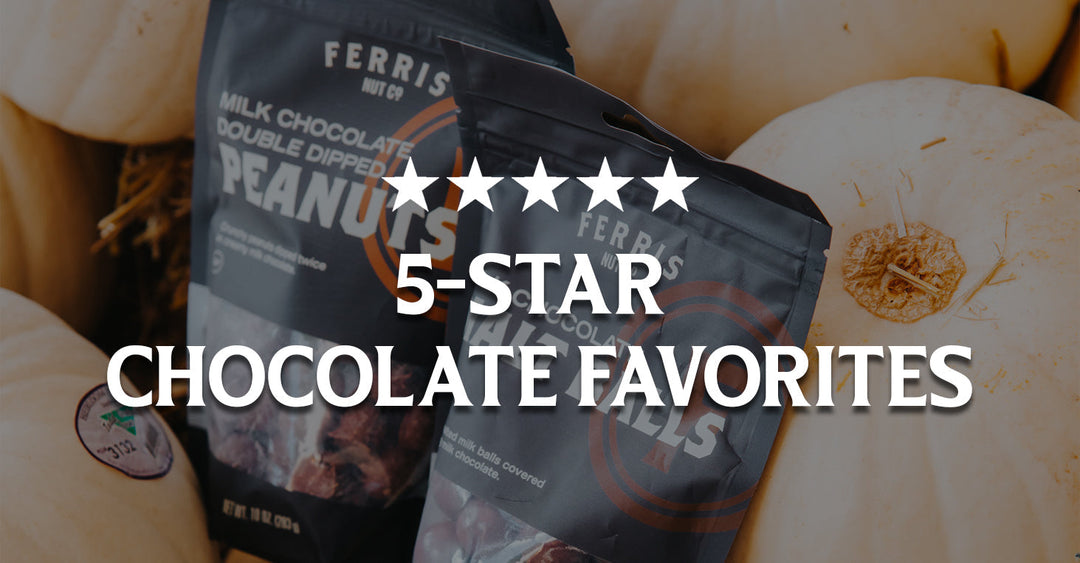What's the Strongest Coffee You Have?
One of the most frequently asked questions that we get at Ferris is “What is the strongest coffee you have?” There isn’t really a simple answer to this question, therefore let me give you an explanation of some stuff first…
When we talk about strength in our coffee, what we’re actually referring to is the Total Dissolved Solids that have been incorporated into the solution (coffee) as a result of brewing. This gets complicated so I won’t go too in depth, but suffice to say that an ideal TDS percentage is in the range of 1.15%-1.350%. This is a measurement of the milligrams of dissolved solids of a substance per liter of liquid.
There are a lot of factors that can be manipulated in order to hit this percentage, but maybe the most useful for the purposes of this article is using a specific coffee to water ratio. For example, I used 25 grams of coffee and 350 grams of water to brew my cup of coffee this morning. This means, if we divide the amount of water used, which in this case is 350 grams, by the amount of coffee we used, which in this case is 25 grams, we find our “brew ratio”, which in this case is 14, or 1 to 14. I used 1 part coffee to 14 parts water to brew my coffee this morning. If I extrapolate this for all you folks that use a standard coffee brewer which typically holds about 64 oz. of water for a full pot, I’d use 4.5 oz of coffee for a full pot! With both brews, the coffee to water ratio is the same, so the TDS in both brews will have a good chance to fall in the ideal range. That being the case, the “strength” of the coffee in both of these brews should be similar. If I were to use a ratio of say, 1 to 20 coffee to water, the “strength” of the brew would be weaker, as we would be using less coffee for the same amount of water, and therefore the TDS in the brew would most likely be a lower percentage, make sense?
There are other factors that affect the TDS percentage, and there’s a big difference between TDS and extraction yield, but that’s for another topic. Notice that I use weight, and not volume, to determine the coffee and water amounts. The density of coffee varies widely by volume, and therefore using a measurement of volume, like a tablespoon for instance, is not an ideal way to determine how much coffee to use when brewing. It should be noted that I’m assuming 1 fl. oz. of water (volume) is equal to 1 oz. by weight (mass), which is usually pretty close. Weight out your coffee, and water, do it.
To recap the last paragraph; the more little granules of dissolved stuff in a solution, the greater the strength of that solution.

So now that we know that strength of coffee is ultimately determined by the total dissolved solids, let’s talk about a couple things I’ve found that can add to the sensation of strength.
- Dark Roasts – Dark roasted coffee seems to be synonymous with strong coffee. I’ve found that often times when someone want’s a strong coffee, they actually mean a dark roasted coffee. Darker roasts contain more carbon as bean fibers are burned at higher heats. The typical smoky, dark chocolate notes of dark roasts tend to be more assertive in the cup as opposed to the subtle nuances of lighter roasts, and that’s why I believe people equate dark roasts to strong coffee.
- Body – The body or mouthfeel of a coffee can greatly impact the perceived strength of any solution. Some coffees have more fats and lipids that increase their body, giving more weight to the coffee when on the tongue. This can feel like the coffee is heavier, or stronger, even though the TDS might be equal to that of a lighter bodied coffee. This being that case, it is entirely possible that someone who prefers “strong” coffee actually prefers a heavier bodied coffee.
So what is the strongest coffee we have? Well, at Ferris, we brew ALL of our coffees with the goal in mind of hitting the ideal amount of total dissolved solids, and the coffee to water ratios don’t vary significantly so come into our coffee shop and try them all! Given the other possibilities we’ve discussed that people who prefer “strong” coffee might enjoy, I’d point you toward medium to darker roasted Brazils, Sumatras, or Guatamalas, you basically have to chew them….






